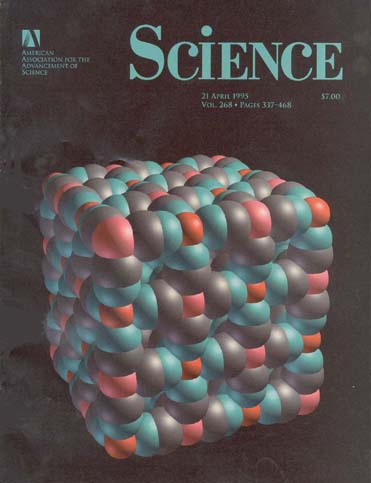

COVER: Space-filling model of the molecule-based magnetic material Cs2MnII[VII(CN)6], which orders ferrimagnetically at 125 K in an external field of 25 G. The atoms are described by their van der Waals radii; manganese(II) centers are pink, vanadium(II) centers are red, carbon centers are gray, and nitrogen centers are blue-green. The cesium cations, which occupy the interiors of every cube, have been omitted. [Image prepared by K. Llewellyn, M. Rosenblatt, D. White, W. R. Entley, and G. S. Girolami, University of Illinois at Urbana-Champaign.]© AAAS.
NOTE: This solid is a metal-substituted analogue of the well-known pigment Prussian blue, in which the metal centers are iron(II) and iron(III) ions. Prussian blue is a magnetic solid only below 5 K. More recent work in our group (1999) has shown that a Prussian blue analogue containing vanadium(II) and chromium(III) ions, KVII[CrIII(CN)6]2H2O retains its magnetism even at 376 K (above 100 ° C)! This accomplishment opens the way for practical applications for this new class of magnetic solids. For more details, see publication #125 in the Girolami publication list.